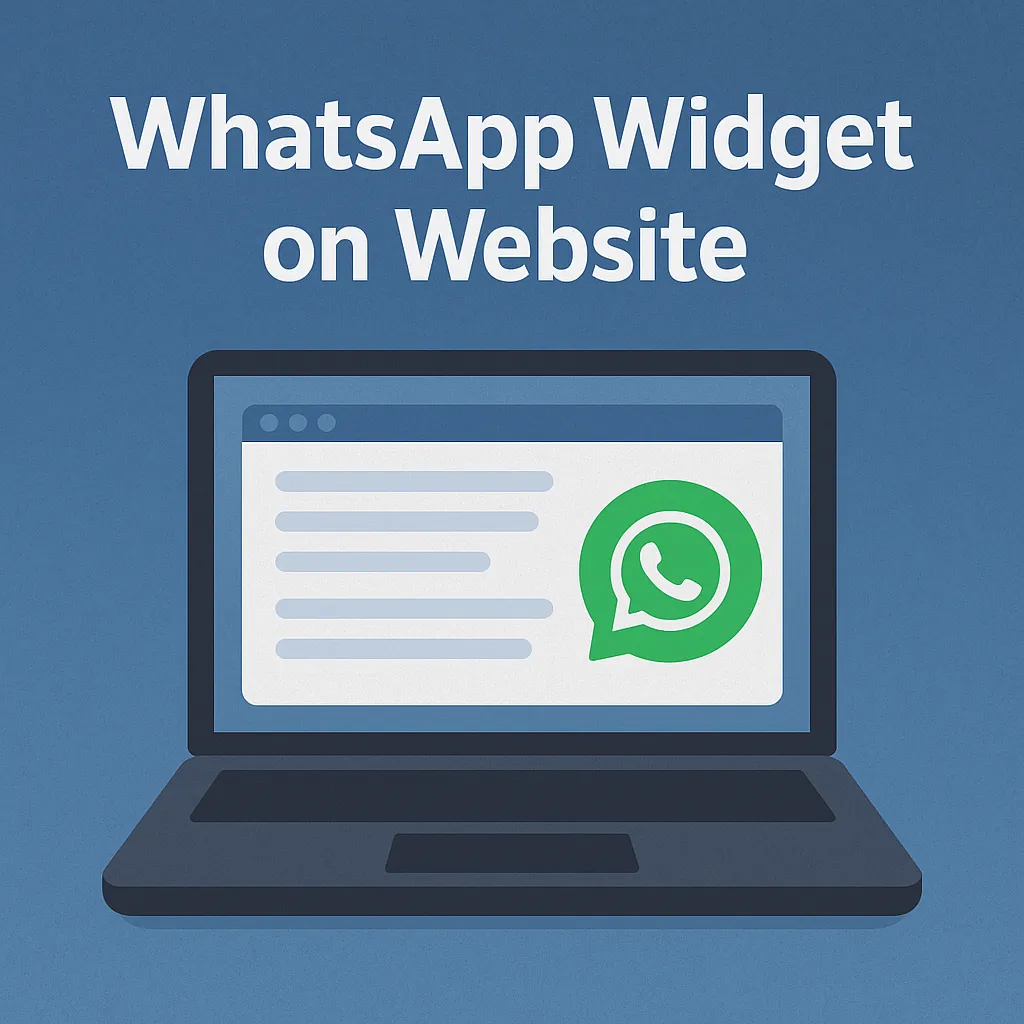When it comes to engaging with your audience, speed and simplicity win. That’s exactly why adding a WhatsApp widget for website pages is a game-changer. Visitors don’t want to hunt for contact forms or wait for email replies—they want instant answers. And WhatsApp, being one of the most familiar messaging platforms on the planet, offers just that.
So, what makes a WhatsApp widget such a powerful tool for businesses? Let’s break it down step by step—from what it does, to why it works, and how you can start using it to your advantage today.
What is a WhatsApp Widget?
A WhatsApp widget is a small embedded chat button on your website that allows visitors to start a WhatsApp conversation with your business instantly. It usually appears in the lower corner of your site and can be customized to match your brand colors, timing, and target pages.
Unlike traditional live chat systems that require you to monitor a new platform, WhatsApp brings everything to your phone. That makes it ideal for solo entrepreneurs, small businesses, and even customer support teams who want to centralize communication.
Why Use a WhatsApp Widget for Website Integration?
Think about this: over 2 billion people use WhatsApp monthly, and more than 100 billion messages are sent every day. By embedding a WhatsApp widget for website interaction, you’re tapping into a platform your customers already use daily.
Top reasons why businesses are switching to WhatsApp widgets:
- Real-time communication: No waiting time for answers.
- Higher trust: Messaging apps feel more personal than web forms.
- Better response rates: WhatsApp messages get opened and replied to more often than emails.
- Cross-device compatibility: Works just as well on mobile as it does on desktop.
This tool doesn’t just make communication easier—it makes it more effective. And that translates into more leads, faster conversions, and happier customers.
Key Features to Look For in a WhatsApp Widget
Not all widgets are created equal. If you want a tool that really helps your business grow, make sure it checks these boxes:
1. Easy Installation
You shouldn’t need a developer to install your widget. A quality whatsapp widget for website should provide a simple code snippet or plugin you can drop into your site in minutes.
2. Customization Options
Being able to change colors, icons, greetings, and position on the page helps you keep things on-brand.
3. Smart Triggers
Want the widget to show up only on certain pages or after a few seconds? Look for widgets that let you set rules based on user behavior.
4. Mobile Responsiveness
Over half your traffic likely comes from mobile. Make sure the widget doesn’t interfere with navigation or slow down the site.
5. Analytics and Tracking
Some advanced widgets offer click tracking or integration with tools like Google Analytics, so you can see how many conversations actually start through the widget.
How to Add a WhatsApp Widget to Your Site in Minutes
Here’s a quick guide to embedding a whatsapp widget for website functionality, even if you’re not a techie:
Step 1: Choose a trusted widget provider like StackWhats.
Step 2: Create your widget by entering your WhatsApp number, preferred greeting message, and customizing appearance.
Step 3: Copy the provided code snippet.
Step 4: Paste the code into your website’s header or footer (using tools like WPCode or directly in your CMS theme).
Step 5: Save and refresh. The widget will now appear across your site.
If you’re using WordPress, most providers also offer plugins that make this even easier.
Real-World Results: What Businesses Are Seeing
Businesses across industries—from eCommerce to service providers—are seeing a dramatic shift after adding a whatsapp widget.
Here’s what some have reported:
| Business Type | Result After Adding Widget |
|---|---|
| Local Service Provider | 40% faster lead response time |
| Online Boutique | 25% increase in conversions |
| SaaS Company | 3x higher customer satisfaction score |
| Educational Consultant | Reduced form abandonment by 50% |
By making the first move easier, the widget helps turn curious visitors into loyal clients.
Is a WhatsApp Widget Right for Your Site?
If your business relies on quick customer interaction—whether that’s to answer pre-sale questions, schedule appointments, or handle support—then yes, it’s not just right. It’s essential.
And even if you don’t consider yourself customer-facing, the widget gives your site a human touch. It says: “We’re here, and we care.” That makes a real difference.
Best Practices for Using a WhatsApp Widget
Want to make the most out of your new widget? Here are some quick tips:
- Set expectations: Use an auto-message that says when users can expect a reply.
- Avoid overload: If you get too many messages, consider routing them to specific departments or time slots.
- Be professional yet friendly: WhatsApp is casual, but your tone should still reflect your brand.
- Use labels and quick replies: Especially helpful if you’re managing multiple chats at once.
- Track your results: Compare engagement before and after you install the widget to see impact.
The Future of Site Messaging is Instant and Personal
As online competition heats up, giving visitors a fast, familiar way to reach you is no longer optional. It’s expected. A whatsapp widget for website gives you that edge. It’s cost-effective, simple to set up, and speaks the language your audience already knows.
Whether you’re a solo founder or part of a large support team, this little button can make a big difference. Start a conversation, and you might just start a sale.

